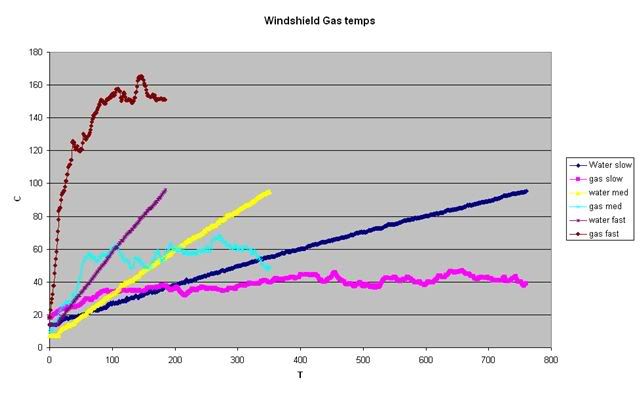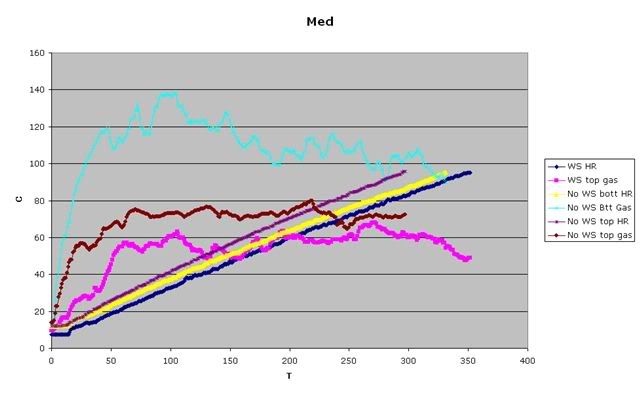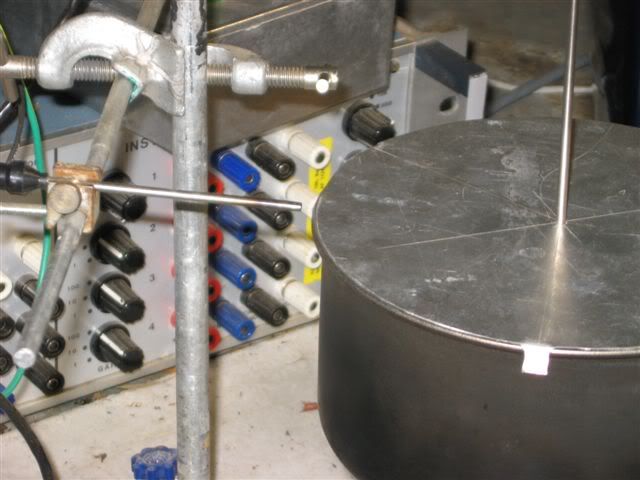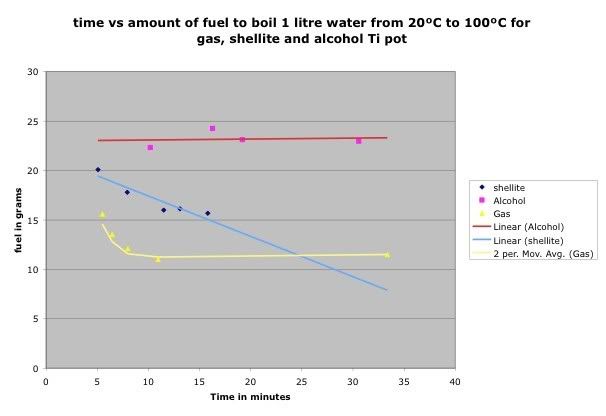It is often assumed that using a windshield it directs the heat from the flame up the side of the pot and therefore the sides will absorb heat into the water, this may be so with some stove systems but this may not necessarily be so with all stoves systems at all settings.
I have just run some tests measuring the gas temperatures up the sides of a pot with and without a wind screen and at different valve settings.
These tests are far from comprehensive and only one test per setting was conducted, a comprehensive set of tests would take more time than I have available to me at the moment.
Stove used a Kovea Supalite Titanium. Pot used a Snow peak Ti 1liter, Windshield very old modified MSR Whisperlite.
The first tests where done with a suspended windscreen that covered the pot and burner, The canister was not covered, the windshield was placed around the pot with about 1-1.5cm gap and the hot gas temperature probe was placed at the top to measure the hot gasses coming out the top gap (see picture 1).

Picture 1
The tests where done in my garage under windless conditions at an ambient temperature of around 10C.
Results Windshield

Chart 1
Three tests where done using different control valve settings, slow, medium and fast, the medium setting as around what I use in the field.
Slow setting: 6.2g/80C, 10m 45s/80C.
Medium setting: 6.3g/80C, 5m 20s/80C
Fast setting: 7.2g/80C, 2m 59s/80C
Results: with the slow test the gas temperature did not raise much above around 40C, there is some evidence in the gas result line that the gas temperature is actually rising as the water temperature rises therefore it maybe taking heat away from the water in the pot.
The same could be said for the medium test but to a much lesser extent.
With the fast test some heat would be absorbed into the water from the sides but more gas was used.
Note that in all tests the gas temperature measured went up and down randomly, I am not sure exactly what is going on but I think that cooler air is being entrained with the hot gasses.

Chart 2: HR= heating Rate, Gas = gas temperatures.
With chart 2 the probe was placed in three places and temperatures recorded, the first was with no windscreen (No WS top HR and No WS top gas) and was placed at the bottom of the pot 15 mm from the bottom 3 mm from the side (see picture 2), the second (No Ws bott HR and No WS bott Gas) also with no windscreen the probe was placed at the top (picture 3) 3 mm from the sides, the third placing was with a windscreen and the probe was placed at the top as per tests in graph 1.

Picture 2

Picture 3
WS top setting: 6.3g/80C, 5m 20s/80C
No WS top setting: 6.2g/80C, 5m 10s/80C
No WS bottom setting: 6.5g/80C, 4m 45s/80
With all three tests the settings where set at about what I would set the stove in the field (this is not exact science but with canister gas stoves it is very difficult to exactly to repeat tests.)
Results: It can be noted that with the top placed probes the measured gas temperature where lower than the bottom placed probe , my thoughts on this is that as the hot gas travel’s up the sides it mixes with the cooler surrounding air cooling the gas down, surprisingly this also happens when the windshield is used some of this heat loss my be from contact with the windshield but my guess is that as the hot gasses travel up th sides it entrains cooler air.
When I find time I will do some similar tests with my flux ring pot to look at the gas temperatures up the sides and to see if I can see if using the neoprene cozy makes any difference.
Conclusion: As pointed out in my earlier discussions these tests are not comprehensive but they show that in a windless environment using a windshield makes very little if any difference to the efficiency of a canister stove system, in a windless environment the main influence on efficiency is the valve setting.
Tony



